
Mgarr: Malta's Hidden Gem of Rustic Charm
Discover Mgarr, Malta's hidden gem, where rustic charm, rich history, and natural beauty come together for an unforgettable escape.
Nestled on the picturesque island of Malta, Mgarr is a serene village that offers an authentic taste of Maltese rural life. Known for its rolling countryside and traditional farmhouses, Mgarr is a destination that promises tranquility and a slower pace, perfect for those looking to escape the hustle and bustle of city life. The village is famous for its agricultural heritage, with fields of fresh produce that supply local markets and restaurants. Visiting Mgarr, you can savor the flavors of homegrown fruits and vegetables, and indulge in traditional Maltese dishes at local eateries. The village is also renowned for its bountiful vineyards and olive groves, producing some of the finest wines and olive oils in the region. Mgarr boasts a rich history, with several historical sites and landmarks to explore. The Parish Church of Mgarr, dedicated to Saint Mary, stands as a testament to the village's deep-rooted religious traditions. Nearby, you can find the ancient Ta' Ħaġrat Temples, a UNESCO World Heritage site dating back to the Neolithic period. These temples are among the oldest free-standing structures in the world, offering a fascinating glimpse into Malta's prehistoric past. For nature lovers, Mgarr is an ideal base for outdoor adventures. The surrounding countryside is crisscrossed with scenic walking trails that lead to stunning viewpoints and hidden coves. A short hike will take you to the pristine beaches of Golden Bay and Għajn Tuffieħa, where you can relax on golden sands and swim in crystal-clear waters. Whether you're exploring the village's cultural heritage or enjoying its natural beauty, Mgarr is a destination that captures the heart and soul of Malta.
Local tips in Mgarr
- Visit during spring or autumn for pleasant weather and fewer tourists.
- Try the local specialty, 'Fenek' (rabbit stew), at one of Mgarr's traditional restaurants.
- Rent a bike to explore the scenic countryside and nearby beaches.
- Don't miss the Sunday morning market for fresh local produce and artisanal goods.
- Check out the local wine festivals if your visit coincides with harvest season.
Mgarr: Malta's Hidden Gem of Rustic Charm
Nestled on the picturesque island of Malta, Mgarr is a serene village that offers an authentic taste of Maltese rural life. Known for its rolling countryside and traditional farmhouses, Mgarr is a destination that promises tranquility and a slower pace, perfect for those looking to escape the hustle and bustle of city life. The village is famous for its agricultural heritage, with fields of fresh produce that supply local markets and restaurants. Visiting Mgarr, you can savor the flavors of homegrown fruits and vegetables, and indulge in traditional Maltese dishes at local eateries. The village is also renowned for its bountiful vineyards and olive groves, producing some of the finest wines and olive oils in the region. Mgarr boasts a rich history, with several historical sites and landmarks to explore. The Parish Church of Mgarr, dedicated to Saint Mary, stands as a testament to the village's deep-rooted religious traditions. Nearby, you can find the ancient Ta' Ħaġrat Temples, a UNESCO World Heritage site dating back to the Neolithic period. These temples are among the oldest free-standing structures in the world, offering a fascinating glimpse into Malta's prehistoric past. For nature lovers, Mgarr is an ideal base for outdoor adventures. The surrounding countryside is crisscrossed with scenic walking trails that lead to stunning viewpoints and hidden coves. A short hike will take you to the pristine beaches of Golden Bay and Għajn Tuffieħa, where you can relax on golden sands and swim in crystal-clear waters. Whether you're exploring the village's cultural heritage or enjoying its natural beauty, Mgarr is a destination that captures the heart and soul of Malta.
When is the best time to go to Mgarr?
Iconic landmarks you can’t miss
Mdina Gate
Explore the Mdina Gate, a stunning historical landmark in Malta, showcasing rich architecture and captivating views of the ancient city.

Blue Grotto
Explore the stunning Blue Grotto, Malta's breathtaking natural wonder, famous for its crystal-clear waters and mesmerizing sea caves.

St Paul’s Catacombs
Uncover the secrets of early Christianity at St. Paul's Catacombs in Rabat, Malta, an archaeological marvel and serene spiritual site.

Hagar Qim Temple
Discover the ancient wonders of Hagar Qim Temple, a UNESCO World Heritage site showcasing Malta's rich prehistoric civilization.

The Red Tower
Discover The Red Tower in Mellieħa, a stunning historical landmark offering breathtaking views of the Mediterranean and the island of Gozo.

Mnajdra
Explore Mnajdra, Malta’s ancient megalithic temples, offering a breathtaking blend of history, culture, and stunning coastal views.

Gnejna
Discover Gnejna, a tranquil beach in Malta's Mġarr, offering golden sands, crystal-clear waters, and breathtaking sunsets for an unforgettable getaway.
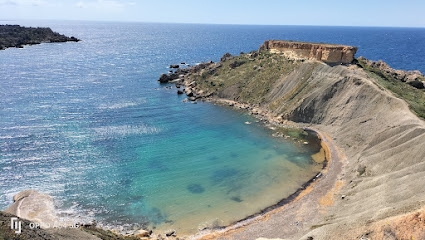
Għajn Tuffieħa
Experience the tranquil beauty of Ġajn Tuffieħa, Malta's hidden beach paradise with golden sands and crystal-clear waters, perfect for relaxation and adventure.

Singita Miracle Beach
Discover the vibrant atmosphere of Singita Miracle Beach, a cocktail bar nestled along the stunning Ghajn Tuffieha Bay in Malta, perfect for relaxation.
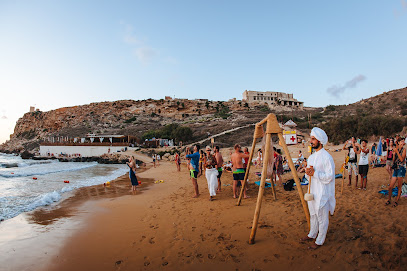
Mdina fortress
Discover the enchanting Mdina Fortress, a historic gem steeped in Malta's rich past, where stunning views and ancient architecture await.

Domvs Romana
Explore Domvs Romana, an archaeological museum in Mdina showcasing exquisite Roman mosaics and artifacts, revealing Malta's rich historical heritage.

Sanap Cliffs
Discover the breathtaking beauty of Sanap Cliffs in Munxar, Malta, where majestic cliffs meet the azure sea for an unforgettable experience.

Tal-Ingliz Restaurant
Experience authentic Maltese cuisine at Tal-Ingliz Restaurant, where local flavors meet warm hospitality in a picturesque setting.

Santa Maria Caves
Discover the enchanting Santa Maria Caves, Malta's hidden gem featuring stunning rock formations and rich historical significance in a serene natural setting.

Ta' Soldi Restaurant
Experience authentic Maltese cuisine at Ta' Soldi Restaurant in Mgarr, where tradition meets flavor in a warm and inviting atmosphere.

Unmissable attractions to see
Popeye Village
Discover Popeye Village in Mellieħa, Malta – a charming theme park where animated adventures come to life amidst stunning coastal views.

Malta National Aquarium
Explore the Malta National Aquarium, where marine life comes alive in stunning exhibits and educational experiences for all ages.

Golden Bay
Discover the stunning beauty of Golden Bay in Mellieħa, Malta – a perfect blend of relaxation, adventure, and breathtaking scenery.

Mosta Rotunda
Explore the stunning Mosta Rotunda, Malta's architectural gem, featuring a grand dome and rich cultural heritage, a must-see for every traveler.

Basilica of the National Shrine of the Blessed Virgin of Ta' Pinu
Discover the breathtaking architecture and serene spirituality of Ta' Pinu Basilica, an iconic shrine in the heart of Malta's stunning countryside.

St Paul’s Catacombs
Explore Malta's rich heritage at St. Paul's Catacombs, a remarkable archaeological site showcasing ancient burial practices and history.

St Paul’s Catacombs
Unveil the secrets of early Christian burial practices at St. Paul’s Catacombs in Rabat, Malta, a UNESCO World Heritage site rich in history.

It-Tempji tal-Ġgantija
Explore the ancient Ggantija Temples in Xagħra, Malta – a UNESCO World Heritage site and one of the oldest structures in the world.

Dingli Cliffs
Experience stunning coastal views and rich history at Dingli Cliffs, the highest point in Malta, perfect for hiking and breathtaking sunsets.

Dingli Cliffs
Experience the breathtaking beauty of Dingli Cliffs, Malta's stunning scenic spot with panoramic views of the Mediterranean and rich natural history.

Park Nazzjonali Ta' Qali
Explore the beauty of Park Nazzjonali Ta' Qali, Malta’s premier national park, where nature meets history in a serene and picturesque setting.

Mellieha Bay
Explore Mellieha Bay: Malta's gem with stunning beaches, crystal-clear waters, and rich cultural heritage, perfect for relaxation and adventure.

Xlendi Beach
Experience the natural beauty and vibrant culture of Xlendi Beach, a stunning destination in Malta perfect for relaxation and adventure.

Inland Sea Dive Site
Discover the breathtaking depths of the Inland Sea Dive Site in San Lawarenz, Malta, where adventure meets stunning natural beauty.

Ramla Beach
Explore Ramla Beach in Malta, where golden sands meet crystal-clear waters, offering a perfect escape for relaxation and adventure.

Essential places to dine
Country Terrace Mgarr Gozo Malta
Experience authentic Maltese cuisine amidst stunning views at Country Terrace in Għajnsielem - A true taste of Mediterranean bliss.

Il-Barri Restaurant
Experience authentic Maltese cuisine at Il-Barri Restaurant in Mġarr – where tradition meets taste in every bite.

United Restaurant Behind The Church
Experience authentic Mediterranean flavors at United Restaurant Behind The Church in Mġarr - a culinary journey through Malta's rich culinary heritage.

one80 Kitchen at Mgarr Yacht Marina
Experience exquisite dining at One80 Kitchen overlooking Mgarr Yacht Marina – a perfect blend of local flavors and stunning views.

Mgarr United Bar & Restaurant
Experience authentic Maltese cuisine in a cozy setting at Mgarr United Bar & Restaurant - A must-visit for food lovers!

Farmers bar
Discover the delightful flavors of Malta at Farmers Bar in Mġarr—where tradition meets taste in an inviting atmosphere.

Square Gastro Bar
Discover the vibrant flavors of Malta at Square Gastro Bar - where gourmet meets casual dining in Mellieħa.

Ta' Celita - Sunny Bar and Restaurant
Experience exquisite dining at Ta' Celita in Mġarr - where traditional Maltese flavors meet modern culinary artistry amidst stunning views.

Tal-Ingliz Restaurant
Experience authentic Maltese cuisine at Tal-Ingliz Restaurant in Mġarr - a culinary journey through Malta's rich flavors awaits.

Ta' Soldi Restaurant
Discover authentic Maltese cuisine at Ta' Soldi Restaurant in Mġarr - where every dish is a celebration of flavor and tradition.
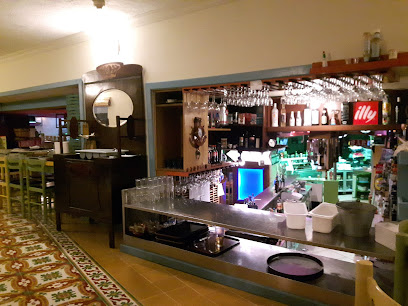
Ċavett Place
Savor authentic Maltese cuisine at Ċavett Place in Mġarr – where tradition meets taste in a cozy atmosphere.

Tmun Restaurant (Mgarr Harbour)
Experience the best of Mediterranean cuisine at Tmun Restaurant in Mgarr Harbour—where delicious food meets stunning seaside views.

Ta' Tona Bar & Restaurant
Savor authentic Mediterranean flavors at Ta' Tona Bar & Restaurant in Mġarr – where culinary tradition meets stunning ambiance.

Rebekah's Restaurant
Experience exquisite Mediterranean cuisine in an elegant setting at Rebekah's Restaurant in Mellieħa.

Dine West
Discover delicious breakfasts and lunches at Dine West in Mġarr - where every meal is a celebration of Maltese flavors.

Markets, malls and hidden boutiques
Vella Supermarket
Discover local flavors at Vella Supermarket, Mġarr's premier grocery store for fresh produce and traditional Maltese products.

J&L market
Explore J&L Market in Mġarr for fresh local produce and a taste of genuine Maltese hospitality.

Needs & Treats
Explore the vibrant local flavors at Needs & Treats Supermarket in Mġarr, the perfect stop for fresh produce and Maltese delicacies.

D Farm
Discover the freshest local produce at D Farm, Mġarr's premier greengrocer, where quality meets tradition in every bite.

Fruit and vegetable market
Immerse yourself in the vibrant atmosphere of the Mġarr Fruit and Vegetable Market, showcasing the best of Malta's fresh produce and local flavors.
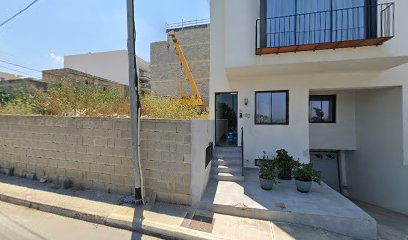
Creative Glams
Explore Creative Glams in Mġarr for unique gifts, exquisite wedding items, and enchanting Christmas decorations that embody the spirit of Malta.

MV Hardware
Explore MV Hardware in Mġarr for a fantastic range of tools and supplies, perfect for any home improvement project during your visit.

Mġarr Ironmongery
Discover Mġarr Ironmongery, the premier hardware store in Malta offering quality tools and supplies for all your DIY needs.

Pure
Experience the charm of Mġarr at Pure, your local general store for unique Maltese goods and everyday essentials.

Vella Wholesalers - Ta' Bakkar
Explore Vella Wholesalers in Mġarr - Your destination for pet supplies, fishing gear, and grocery essentials in Malta.

Convenience Shop Mgarr
Explore Mġarr with ease at Convenience Shop Mgarr - your go-to store for snacks, drinks, and essentials while enjoying Malta's charm.

Eclipse Stationery
Explore Eclipse Stationery in Mġarr, Malta, for a unique selection of high-quality stationery and creative supplies that inspire your artistic journey.

Modern Butcher Mgarr
Discover authentic Maltese flavors at Modern Butcher Mgarr, where high-quality meats and local produce await your culinary adventures.

Paper Source mgarr
Discover the creative heart of Malta at Paper Source Mġarr – your go-to stationery store for unique paper goods and artistic supplies.

The ark Crai supermarket
Explore local delicacies and everyday essentials at The Ark Crai Supermarket in Mġarr, the heart of Maltese culinary culture.

Essential bars & hidden hideouts
Il-Barri Restaurant
Experience authentic Maltese cuisine at Il-Barri Restaurant in Mġarr, where tradition meets taste in a cozy bar atmosphere.

United Restaurant Behind The Church
Experience authentic Mediterranean cuisine at United Restaurant Behind The Church in Mġarr, where every meal tells a story of local flavors and tradition.

Singita Miracle Beach
Discover the vibrant atmosphere and exquisite cocktails at Singita Miracle Beach, a top destination for relaxation and scenic views on Ghajn Tuffieha Bay.

Mgarr United Bar & Restaurant
Experience the best of Maltese cuisine at Mgarr United Bar & Restaurant, where local flavors and warm hospitality create an unforgettable dining experience.

Ta' Celita - Sunny Bar and Restaurant
Discover the flavors of Malta at Ta' Celita, a charming restaurant in Mġarr offering delicious local dishes and stunning views.
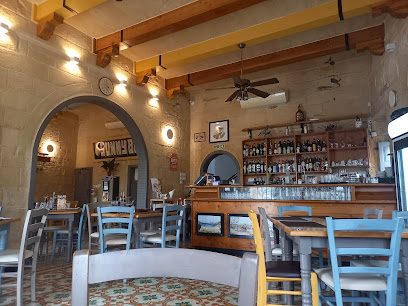
Ta' Soldi Restaurant
Discover the rich flavors of traditional Maltese cuisine at Ta' Soldi Restaurant, where every dish tells a story.

Tac-Canti Bar and Restaurant
Delight in the rich flavors of traditional Maltese cuisine at Tac-Canti Bar and Restaurant, set in the beautiful village of Mġarr.

Gleneagles Bar
Experience the charm of Gleneagles Bar in Ghajnsielem, Gozo, where local drinks and vibrant atmosphere await every visitor.

Nenu the Artisan Baker Mġarr
Experience the authentic taste of Malta at Nenu the Artisan Baker Mġarr, where traditional recipes meet artisanal craftsmanship.

Tal Bennej
Experience the rich flavors of Maltese cuisine at Tal Bennej, a charming restaurant in Mġarr with breathtaking views and a welcoming atmosphere.
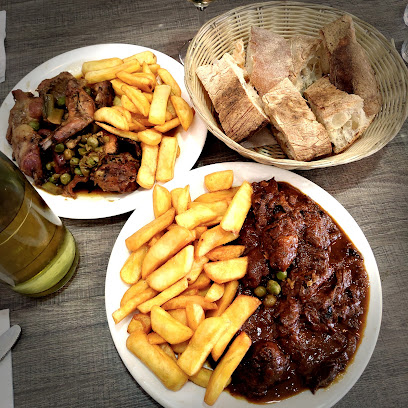
Ta' Belindu Wine Bar
Experience the charm of Maltese cuisine and fine wines at Ta' Belindu Wine Bar in Mġarr, a hidden gem for food lovers and travelers alike.

Caffe bar NANE
Discover the charm of Mġarr at Caffe Bar NANE, where local flavors and cozy vibes create the perfect retreat for every traveler.

Ta' Ciccio
Experience authentic Maltese cuisine at Ta' Ciccio, Mġarr's premier grill restaurant, where fresh ingredients meet vibrant flavors for an unforgettable meal.

Mehboob
Experience the vibrant Maltese culture at Mehboob, a lively bar in Mġarr, offering a delightful selection of drinks and local ambiance.

SAl
Discover the beauty and charm of Mġarr, Malta, where stunning views meet rich culture and delightful local bars.

Local Phrases
-
- HelloBongu
[bon-goo] - GoodbyeĊaw
[chaw] - YesIva
[ee-va] - NoLe
[leh] - Please/You're welcomeJekk jogħġbok
[yekk yohb-hok] - Thank youGrazzi
[grat-see] - Excuse me/SorrySkuzani
[skoo-za-nee] - How are you?Kif int?
[keef int] - Fine. And you?Tajjeb. U int?
[tay-yeb. oo int] - Do you speak English?Titkellim bl-Ingliż?
[tit-kel-leem belling-leez] - I don't understandMa nifhimx
[ma nif-heems]
- HelloBongu
-
- I'd like to see the menu, pleaseNixtieq inara l-menù, jekk jogħġbok
[nishtee-ek inara l-menoo, yekk yohb-hok] - I don't eat meatMa niekolx laħam
[ma nee-ekolsh la-ham] - Cheers!Saħħa!
[sa-ha] - I would like to pay, pleaseNixtieq nħallas, jekk jogħġbok
[nishtee-ek nha-llas, yekk yohb-hok]
- I'd like to see the menu, pleaseNixtieq inara l-menù, jekk jogħġbok
-
- Help!Għajjat!
[ay-yat] - Go away!Mur!
[mur] - Call the Police!Ċempel il-Pulizija!
[chem-pel il-poo-leet-see-ya] - Call a doctor!Ċempel tabib!
[chem-pel ta-beeb] - I'm lostNaqbadt
[nak-baht] - I'm illJien ma ġej
[yeen ma gay]
- Help!Għajjat!
-
- I'd like to buy...Nixtieq inkun
[nishtee-ek in-koon] - I'm just lookingQed inara biss
[ked inara beess] - How much is it?Kemm huwa?
[kem hoo-wa] - That's too expensiveDan huwa wisq ieħor
[dan hoo-wa wees-ku ee-or] - Can you lower the price?Tista' tgħallem il-prezz?
[tista t-alleim il-prezz]
- I'd like to buy...Nixtieq inkun
-
- What time is it?X'ħin huwa?
[shin hoo-wa] - It's one o'clockHuwa l-ewwel siegħa
[hoo-wa l-ew-el see-eha] - Half past (10)Noqs ta'
[noks ta] - MorningFilgħodu
[fil-od-oo] - AfternoonWaranofsinhar
[war-anofs-in-har] - EveningFix-xemx
[feesh-shemsh] - YesterdayIlbieraħ
[il-bee-er-ah] - TodayIllum
[illum] - TomorrowGħada
[ada] - 1Wieħed
[wee-hed] - 2Tnejn
[t-neyn] - 3Tlieta
[tlee-ta] - 4Erba'
[er-ba] - 5Ħamsa
[hamsa] - 6Sitta
[sit-ta] - 7Sebgħa
[seb-gha] - 8Tminja
[t-min-ya] - 9Disgħa
[dis-gha] - 10Għaxra
[agh-ra]
- What time is it?X'ħin huwa?
-
- Where's a/the...?Fejn hemm...
[feyn hemm] - What's the address?X'inhu l-indirizz?
[shin-hoo l-in-dee-reets] - Can you show me (on the map)?Tista' turi ni (fuq il-mappa)?
[tista turi nee, fuq il-mappa] - When's the next (bus)?Meta hu l-ġurnata li ġejja?
[meta hoo l-jur-na-ta li gay-ya] - A ticket (to ....)Biljett (għal ....)
[bil-yet (al)]
- Where's a/the...?Fejn hemm...
History of Mgarr
-
Mgarr's history dates back to prehistoric times, with evidence of human settlement in the area as far back as the Neolithic period. The Ta' Ħaġrat temples, located in Mgarr, are some of the oldest free-standing structures in the world, dating back to around 3600-3200 BCE. These megalithic temples are a testament to the advanced engineering skills and religious practices of Malta's early inhabitants.
-
During the Roman period, which began around 218 BCE, Mgarr was integrated into the broader framework of Roman Malta. The area was primarily agricultural, and the Romans introduced new farming techniques and crops. Several Roman artifacts, including pottery and coins, have been discovered in Mgarr, indicating the area's significance during this era.
-
In the medieval period, Mgarr was part of the feudal system that dominated Malta. The village's strategic location made it an important lookout point, and several watchtowers were constructed to guard against pirate raids. The medieval church of Santa Marija, built in the 15th century, stands as a relic of this period, reflecting the religious and social life of the time.
-
The arrival of the Knights of St. John in 1530 marked a new chapter in Mgarr's history. The Knights fortified the area, building defensive structures to protect against Ottoman invasions. The Lippija Tower, constructed in 1637, is one such fortification. It served as a vital part of the coastal defense network, signaling the presence of enemy ships to the inland villages.
-
Mgarr, like the rest of Malta, became a British colony in 1814 following the Treaty of Paris. The British influence brought modern infrastructure and educational reforms to the area. The construction of the Mgarr parish church, dedicated to the Assumption of Mary, began in 1912 and was completed in 1946, showcasing a blend of traditional Maltese and British architectural styles.
-
During World War II, Mgarr was not spared from the devastation that swept across Malta. The village's strategic location made it a target for Axis bombings. The residents of Mgarr showed remarkable resilience, and the community played a crucial role in supporting the war effort. Several air raid shelters and wartime relics can still be found in the area, serving as poignant reminders of this tumultuous period.
-
Malta gained independence from Britain in 1964, and Mgarr underwent significant transformations in the following decades. The village expanded, with new residential areas and modern amenities being developed. Despite these changes, Mgarr has managed to retain its rural charm and traditional way of life, making it a unique blend of the old and the new.
-
Mgarr is renowned for its rich cultural heritage, which is deeply rooted in its agricultural traditions. The village is famous for its annual Strawberry Festival, known locally as 'Festa Frawli,' held every April. This event showcases the local produce and traditional Maltese cuisine, attracting visitors from all over the island. The village's folklore, music, and customs are celebrated throughout the year, preserving Mgarr's unique cultural identity.
Mgarr Essentials
-
Mgarr is located in the northwestern part of Malta. The most convenient way to reach Mgarr is by flying into Malta International Airport (MLA) in Luqa. From the airport, you can take a taxi or rent a car to drive to Mgarr, which is approximately a 40-minute drive. Alternatively, you can use Malta's public transportation system by taking a bus to Valletta and then transferring to another bus heading to Mgarr.
-
Within Mgarr, the most efficient way to get around is by renting a car, as it gives you the freedom to explore the surrounding areas at your own pace. Public buses also service Mgarr, connecting it to other parts of Malta, including Valletta, Sliema, and St. Julian's. Taxis and ride-hailing services like Bolt are available, but they can be expensive. Biking is a popular option for short distances, and the town is pedestrian-friendly for exploring on foot.
-
The official currency in Malta is the Euro (EUR). Credit and debit cards are widely accepted in hotels, restaurants, and shops. However, it is advisable to carry some cash for smaller establishments and local markets. ATMs are readily available throughout Mgarr, so withdrawing cash is convenient.
-
Mgarr is generally a safe destination for tourists. Standard precautions should be taken, such as avoiding poorly lit areas at night and keeping an eye on personal belongings in crowded places. There are no specific neighborhoods with high crime rates targeting tourists, but staying vigilant is always recommended.
-
In case of an emergency, dial 112 for immediate assistance, which covers police, fire, and medical emergencies. Mgarr has local medical facilities and pharmacies for minor health issues. It is advisable to have travel insurance that covers medical emergencies. For more serious medical concerns, the Mater Dei Hospital in Msida is the main public hospital in Malta.
-
Fashion: Do dress modestly, especially when visiting religious sites. Avoid wearing overly revealing clothing. Religion: Do respect local customs and traditions. When visiting churches, cover your shoulders and knees. Public Transport: Do be courteous and give up your seat to elderly passengers. Don't eat or drink on public buses. Greetings: Do greet locals with a friendly 'hello' or 'bonġu' (good morning in Maltese). A handshake is also common. Eating & Drinking: Do try local dishes like rabbit stew and ftira (Maltese bread). Don't refuse food or drink when offered, as it is considered impolite.
-
To experience Mgarr like a local, visit the Mgarr Farmers Market where you can purchase fresh produce and local delicacies. Engage with locals at the village square, especially in the evenings. Don't miss the opportunity to attend a local festa (village feast), which often includes fireworks, parades, and traditional food. For a unique experience, explore the nearby Għajn Tuffieħa and Golden Bay beaches, which are less crowded than other tourist spots.
Nearby Cities to Mgarr
-
Things To Do in Mellieha
-
Things To Do in Mdina
-
Things To Do in Rabat
-
Things To Do in Bugibba
-
Things To Do in Qawra
-
Things To Do in St. Julian's
-
Things To Do in Gzira
-
Things To Do in Sliema
-
Things To Do in Marsa
-
Things To Do in Mqabba
-
Things To Do in Valletta
-
Things To Do in Paola
-
Things To Do in Zurrieq
-
Things To Do in Tarxien
-
Things To Do in Birgu








